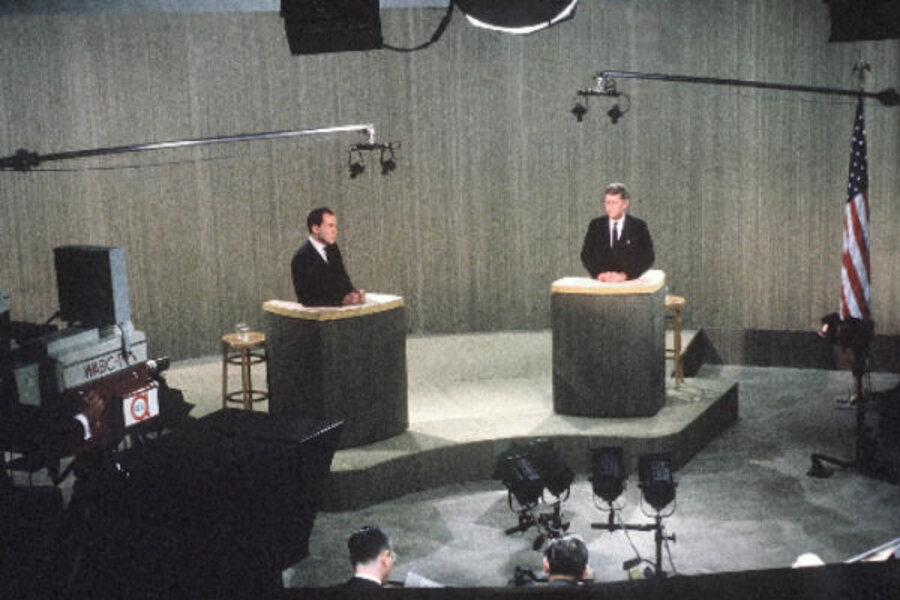Vice President Nixon (R) was favored to win the 1960 presidential election, but the first-ever televised presidential debates gave an unexpected edge to his rival, Senator Kennedy (D).
The first debate on Sept. 26, 1960, pitted a fit and tan Kennedy against a sweaty and pale Nixon. Nixon refused to wear makeup, and his light-colored suit blended with the studio backdrop.
Appearance matters, especially on TV. The four Nixon-Kennedy “great debates” aren’t remembered for the substance of the issues – they spent an inordinate amount of time discussing China’s plan for two tiny Pacific islands – but they gave the lesser-known Kennedy a chance to reach some 70 million voters, who tuned in for the first debate.
That, at least, was Kennedy's view, according to Newton Minow, the man he appointed to chair the Federal Communications Commission. The debates "stoked the public appetite for and the modern campaign's emphasis on the image and the sound byte," Mr. Minton wrote in his book, "Inside the Presidential Debates."







